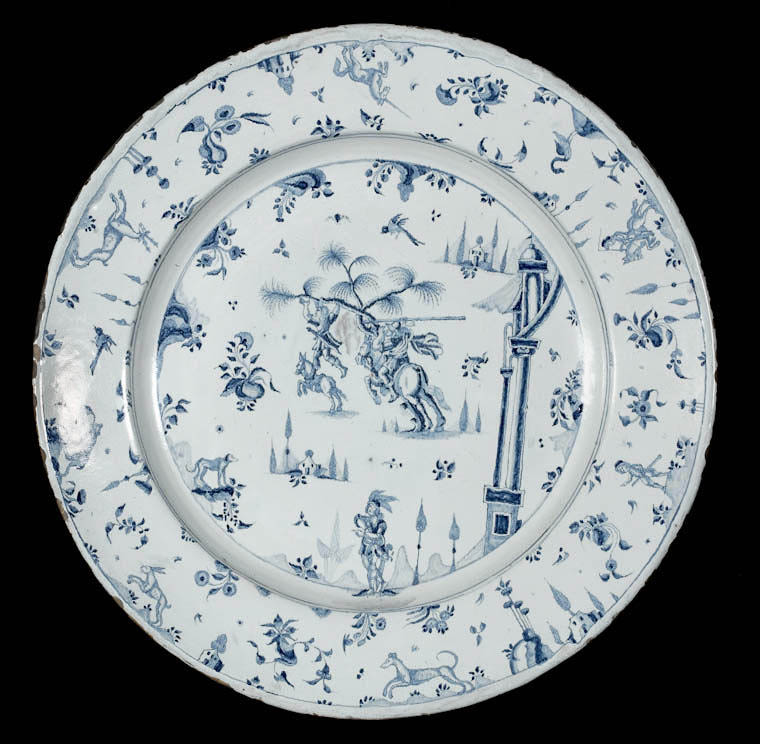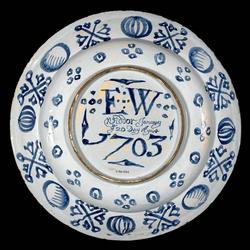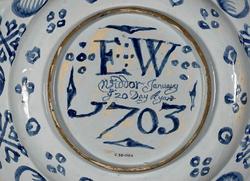Current Location: In storage
Maker(s)
Pottery:
Brislington Pottery
(Probably)
Entities
Categories
Description
Tin-glazed earthenware painted in blue; the Death of Absalom, with other figures, detached sprigs, animals, and buildings; inscribed on the back 'EW/widdor January/ye 20 Day A yard/1703
Reddish-buff earthenware with very pale turquoise glaze, painted in blue. Circular with a wide rim, shallow curved sides and flat centre, standing on a footring. Decorated in the middle with the 'Death of Absalom' and over the rest of the flat area with scattered motifs of a tall building, houses, figures of men and animals, floral sprigs and trees. The rim is decorated with similar motifs, the animals and figures orientated with their feet near the outer edge. The back is inscribed within the footing 'E:W/Widdor January/te 20 Day A yard/1703'. The back of the well is decorated with groups of four small circles alternating with larger circles, and the rim with striped ovals alternating with crossed batons with leaves in the spaces.
Notes
History note: Cecil Baring, 3rd Lord Revelstoke; sold Puttick & Simpson, 20-23 November 1934, Catalogue of an Important Collection of Old English Pottery, the property of the Rt Hon. Lord Revelstoke, third day, 22 November, p. 46, lot 554.
Legal notes
Purchased with the Glaisher Fund
Measurements and weight
Diameter: 56.5 cm
Acquisition and important dates
Method of acquisition: Bought
(1934-11-20)
by
Puttick & Simpson
Dating
18th Century, Early
Queen Anne
Production date:
dated
AD 1703
Note
This style of the decoration of this huge dish was influenced by seventeenth-century Ligurian maiolica which was imported into England. The central motif was taken from the Old Testament, when Absalom, while fleeing on horseback caught his long hair in a tree, and was subsequently captured and killed.
People, subjects and objects depicted
Components of the work
Decoration
composed of
high-temperature colour
( blue from cobalt)
Materials used in production
pale turquoise
Tin-glaze
reddish-buff
Earthenware
Techniques used in production
Tin-glazing
: Reddish-buff earthenware with pale turquoise glaze, painted in cobalt-blue
Inscription or legends present
- Text: EW/Widdor January/ye 20 Day A yard / 1703
- Location: On back inside footring
- Method of creation: Painted in blue
- Type: Inscription
References and bibliographic entries
Related exhibitions
Identification numbers
Accession number: C.38-1934
Primary reference Number: 74735
Glaisher additions number: Gl.Add.55-1934
Stable URI
Audit data
Created: Saturday 6 August 2011
Updated: Monday 25 March 2024
Last processed: Thursday 14 August 2025
Associated departments & institutions
Owner or interested party:
The Fitzwilliam Museum
Associated department:
Applied Arts






